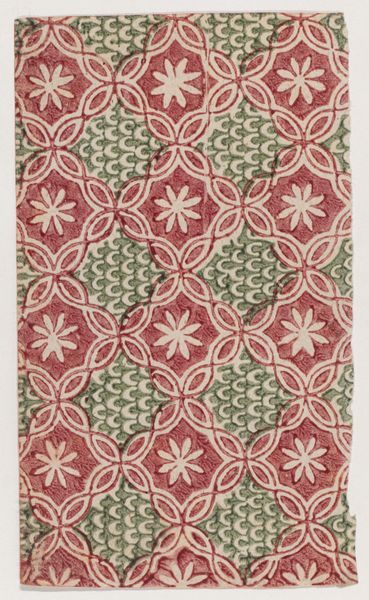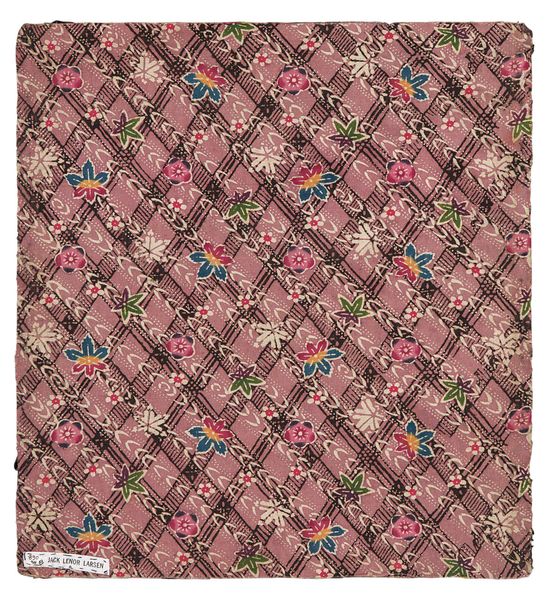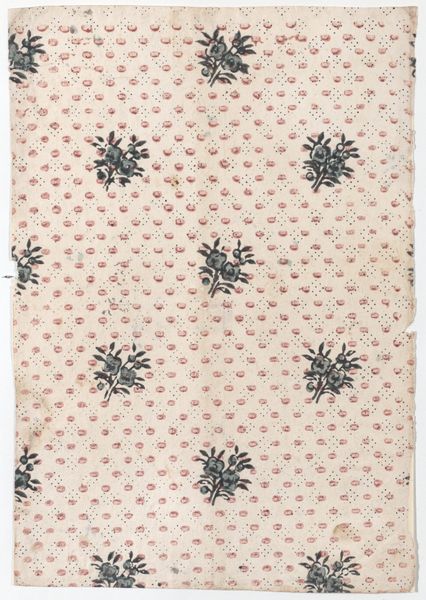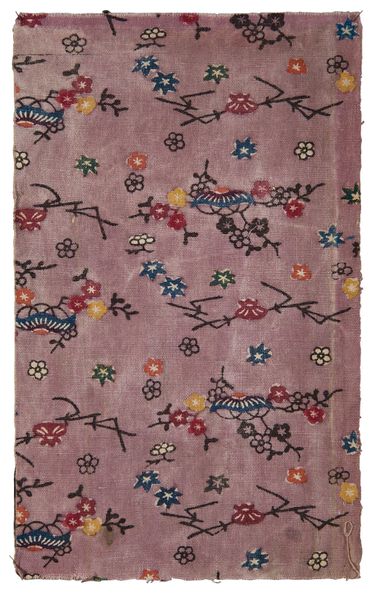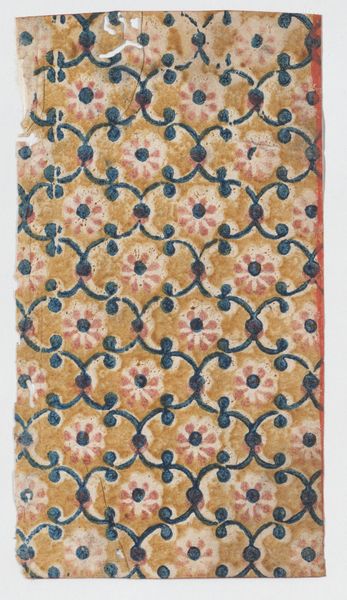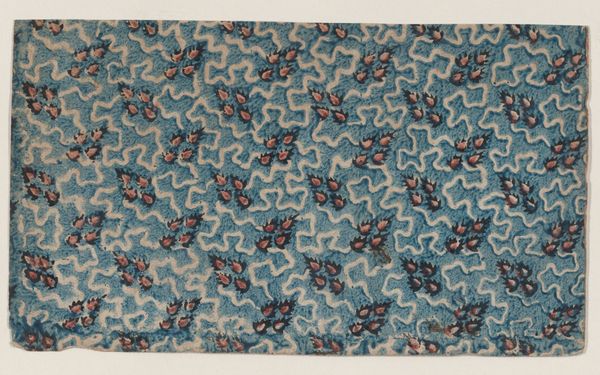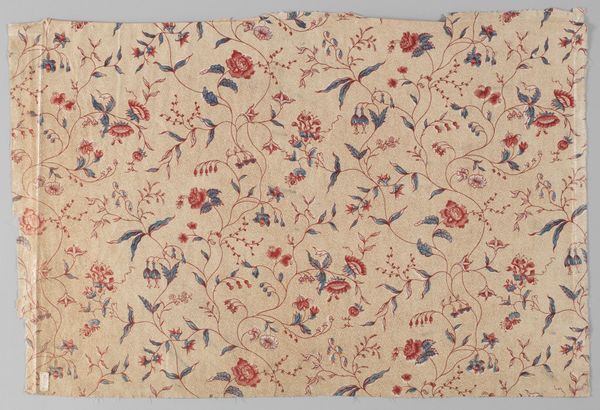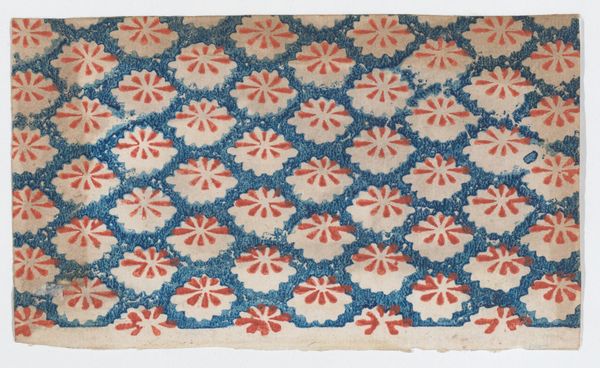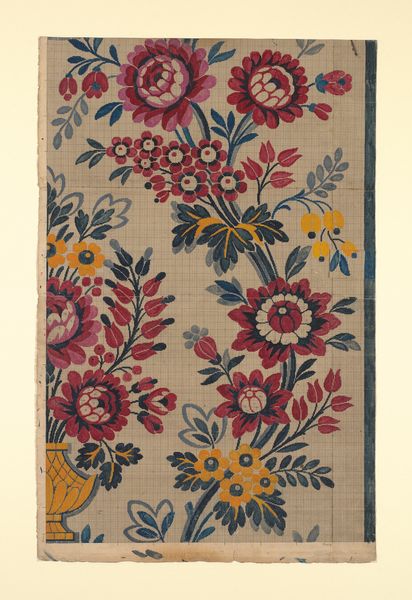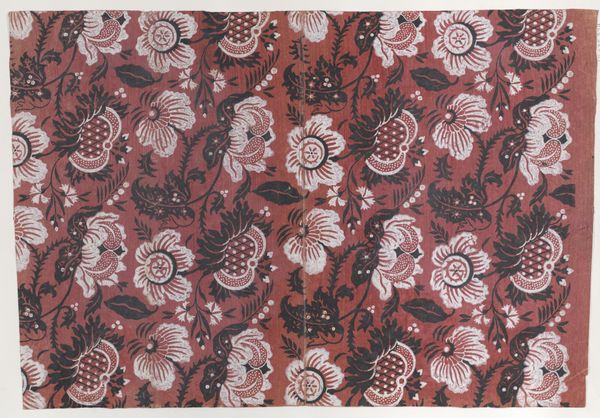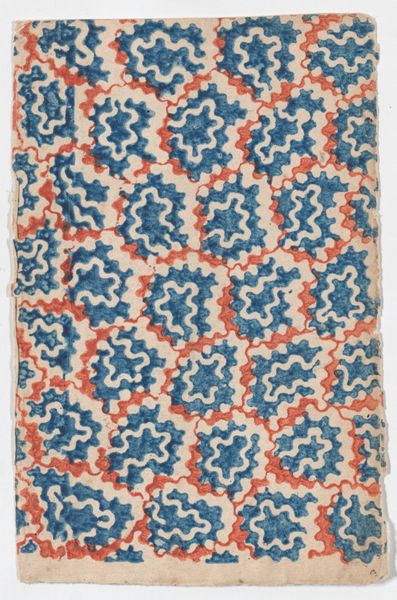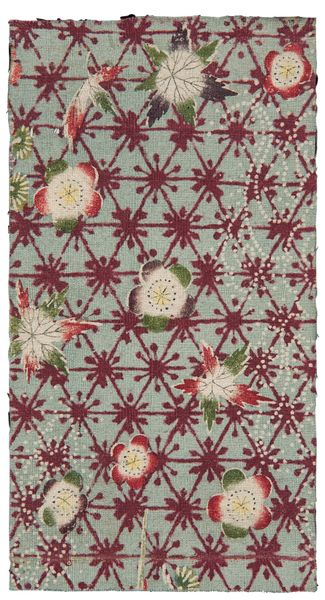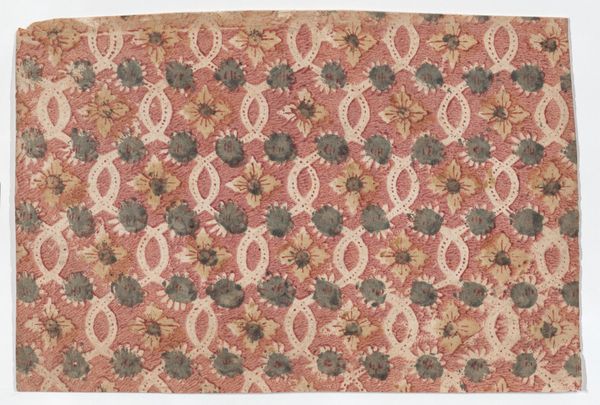
Pink-ground fragment decorated with red maple leaves 18th-19th century
0:00
0:00
mixed-media, fibre-art, collage, weaving, textile
#
pattern heavy
#
mixed-media
#
fibre-art
#
collage
#
pattern
#
weaving
#
textile
#
japan
#
pattern design
#
abstract pattern
#
organic pattern
#
orientalism
#
repetition of pattern
#
regular pattern
#
pattern repetition
#
textile design
#
imprinted textile
#
layered pattern
Dimensions: 7 × 3 3/4 in. (17.78 × 9.53 cm) (overall)
Copyright: Public Domain
Editor: So, this is a fragment of textile art called "Pink-ground fragment decorated with red maple leaves," probably from the 18th or 19th century in Japan. It's giving me patchwork vibes, like a really cool, old quilt square. What strikes you about it? Curator: What interests me is its fragmented nature. As a fragment, its history becomes obscured, opening up questions about its original purpose and context. Was it part of a larger kimono, a furnishing, or something else entirely? The choice to display a fragment also speaks to evolving museum practices, where process and material are valued alongside the finished product. Editor: That's a great point! I was so focused on the pattern. Curator: Consider, too, the pink ground and the red maple leaves. What cultural significance do those hold in Japanese society and how might that meaning have shifted over time with socio-political forces in play? Moreover, how did this aesthetic circulate beyond Japan in, say, the era of Japonisme, and what transformations did it undergo? Editor: I hadn't thought about its life beyond its original creation. How the design gets reinterpreted is key to its ongoing story, right? Curator: Precisely. We must also question why it ended up in a museum collection like the Minneapolis Institute of Art. How does this impact the work's significance, particularly considering questions of cultural appropriation and the museum’s own role in shaping narratives around art and culture? Editor: It’s more than just a pretty pattern, then. The location and the condition both add layers of meaning. Curator: Absolutely. It becomes a cultural artifact imbued with a complex history. Considering the history that it represents and its acquisition are also fundamental to understanding its public role today. Editor: I’ll definitely look at textile art differently from now on! Thanks for making me think about the context. Curator: My pleasure. I hope this inspires a deeper curiosity around the cultural politics surrounding artworks we encounter in museums.
Comments
minneapolisinstituteofart about 2 years ago
⋮
A robe of the Shō Royal Family of the Ryūkyū Kingdom, now in the collection of Naha City Museum of History, is made of these two cloths.
Join the conversation
Join millions of artists and users on Artera today and experience the ultimate creative platform.
